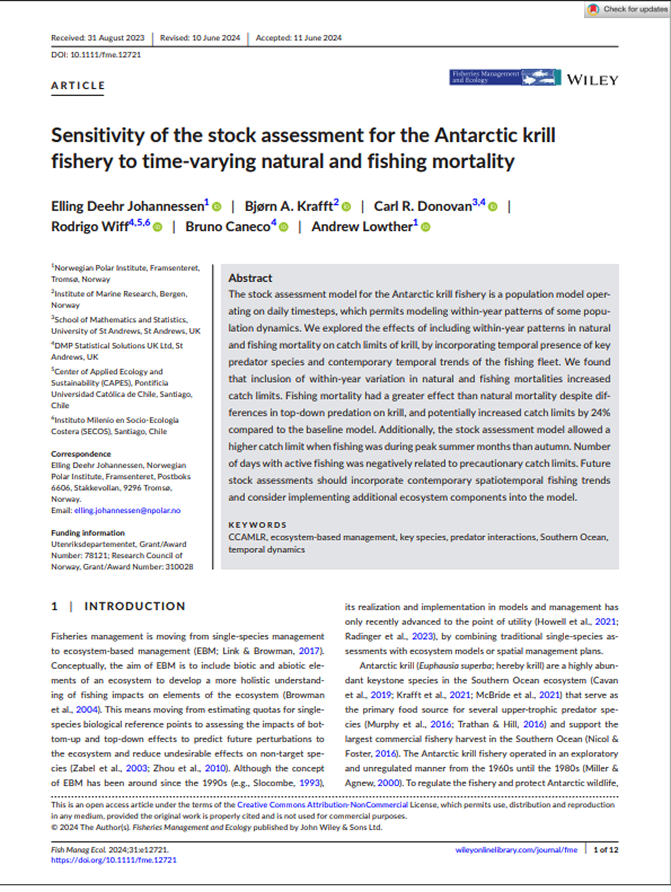Biomass
Antarctic ecosystem
Krill (Euphausia superba)
Number of the Most Abundant Marine Mammals Species in the Vicinities of the Antarctic Peninsula, Scotia Sea, and Powell Basin
Summary
Russian research expeditions in 2020 and 2022 counted marine mammal populations across a 343,000 square kilometer area around the Antarctic Peninsula using visual observation surveys from the research vessel Akademik Mstislav Keldysh. The study estimated populations of approximately 1,200 humpback whales, 2,500 to 2,800 fin whales, and 2,000 to 3,000 Antarctic fur seals in the region. The distribution patterns of these species showed no evidence of competition for food resources either within the same species or between different species, suggesting that krill food supplies were adequate during both survey years.

1
Map showing marine mammal sightings during January 2020 surveys around the Antarctic Peninsula. The map displays locations where researchers observed different species during visual surveys from the research vessel Akademik Mstislav Keldysh.Key Findings
1
In 2020, researchers counted approximately 1,200 humpback whales and 2,800 fin whales across the 343,000 square kilometer survey area. 2
In 2022, the survey found more than 1,200 humpback whales and approximately 2,500 fin whales in a similar area. 3
Antarctic fur seal populations remained stable at 2,000 to 3,000 individuals during both survey years. 4
There was no evidence of food competition either between different whale species or within the same species. 5
Fin whales showed scattered distribution patterns while humpback whales formed groups across the survey area. 6
The whale population estimates were consistent with previous Antarctic research studies. 7
Slightly lower fur seal numbers in 2022 may have been due to different sea ice conditions that year. 8
Researchers used direct visual observation surveys and mathematical spacing calculations to estimate populations.

